There are only a handful of Windows on ARM devices on the market, those being PCs that use Qualcomm Snapdragon processors and run either native ARM apps or emulated x86 apps. I had only known about two from the latest generation, the Snapdragon 850, until May. When I spoke to the Windows on ARM team at Microsoft's Build conference, I found out about the China-exclusive MateBook E.
I've also reviewed the other two Snapdragon 850 PCs, which are great but have some shortcomings. For example, Samsung's Galaxy Book2 has a beautiful Super AMOLED display, but only 4GB RAM. On the other hand, Lenovo's Yoga C630 is the opposite. It has 8GB RAM in a real convertible form factor, but a mediocre 1080p screen.
Huaawei's MateBook E doesn't have those shortcomings. It has a beautiful 1440p display, 8GB RAM, and it's also the only Snapdragon PC to be offered with a 512GB SSD. When I went to China a few weeks ago to check out Huawei's Shenzhen campus, I knew it would be my only chance to get my hands on this awesome device.
Specs
| Chipset | 2.96GHz Qualcomm Snapdragon 850, octa-core |
|---|---|
| GPU | Adreno 630 |
| Body | 194.22x278.82x8.50mm, 640g |
| Display | 12 inches, 2160x1440, IPS LCD |
| Storage | 512GB |
| RAM | 8GB |
| Battery | 36.3Wh |
| Windows Hello | Fingerprint |
| Color | Titanium Ash |
| OS | Windows 10 Home China |
| Price | ¥4,999 |
There are only two configurations, and the other is with 256GB of storage and comes in Charm Sea Blue for ¥3,999.
Day one
At the time of writing, ¥4,999 is $702.53 USD, and the lower end model is $562. It does come with the keyboard cover, but you don't get the pen. And it doesn't even seem like Huawei sells the pen. I tried to find it everywhere, and could only find one on eBay that I did not trust enough to buy. It's strange for a brand-new device that has a pen loop stuck to the keyboard.
It works with the M-Pen Lite, the same pen that came with the MediaPad M5 Lite. This is not to be confused with the M-Pen Pro, which came with the MediaPad M5 Pro. The two pens are not the same. In fact, the MatePen, which came alongside previous generations of the MateBook E, doesn't even work.
Design
Huawei first entered the Windows 10 PC market in 2016 with the MateBook, and the successor to that was the first MateBook E. The design has not changed since then in any meaningful way, other than the pins on the bottom to attach the keyboard. It's still a tablet with an attachable keyboard and pen support.

Last year's MateBook E saw a substantial redesign with the keyboard though, and that's carried over into this year. The top half of the back cover folds down to be a kickstand, meaning that you can use the PC from any angle you want. The original MateBook had this weird magnetic folio attachment that would just fall flat when it felt like it.

The back of the tablet is Titanium Ash colored, and it's not made of metal this time. This is presumably for connectivity purposes; remember, this is an always connected PC. It has 4G LTE built into the chipset.

On the top-right of the device, you'll find the power button, along with two antenna lines on top. On the right side, there's a speaker, a volume rocker, and a USB 3.1 Gen 1 Type-C port. Sorry Thunderbolt fans, Thunderbolt 3 and its juicy 40Gbps speeds is an Intel thing. If you want that kind of speed on a Snapdragon PC, you'll have to wait for USB 4.0.
In the middle of the volume rocker, there's a fingerprint sensor, which is really good. In fact, Huawei's fingerprint readers are always really fast and accurate. The company has become one that I know I can always count on for best-in-class sensors. Unfortunately, since it's not on the power button, you don't get the benefit of not having to scan your finger after it boots up, like you get with the MateBook X Pro.

There's another speaker on the left side of the frame, along with a 3.5mm audio jack on top. Below that, you'll find the nano-SIM card slot. I do hate the 3.5mm jack placement though. It should never be on top. Microsoft does the same thing with Surface and I hate it equally.
One other thing that I want to note about the design is that it's great as a tablet, much better than a Surface Pro in this reviewer's opinion. I've never liked Microsoft's hard edges and that it's thick enough to hold a USB Type-A port. The MateBook E is a lot more comfortable, like an iPad. If you're just holding it and using it for tablet stuff, without the case on it, the MateBook E is better at that use case than probably any other Windows 10 PC. Being that it's also good at being a laptop, that makes it an excellent two-in-one.
Display and audio
The Huawei MateBook E, just as in previous generations, comes with a 12-inch 2160x1440 IPS LCD. Like the Surface Pro, it has a 3:2 aspect ratio, which is definitely better for tablets than 16:9. If you like the wide screen, get a convertible laptop, but the taller screen is definitely better for something that might end up in portrait orientation.

The screen itself looks great, with bright vibrant colors. As you can see from the images, I didn't have any issues with using it outdoors at full brightness. Screens are another thing that Huawei always does well. It also has pretty narrow bezels, at least for a tablet.
I also find the 1440p resolution to be perfect. It's one of those things where 4K would be too much and 1080p would be too low. You won't see any pixellation here, and it's not so high that it negatively affects battery life.

As far as audio quality goes, it's pretty good for what I'd call personal use. What I mean by that is if you're sitting on the couch watching a movie, you're OK. If you're in a talkative environment trying to play music for a whole room, don't even try. It's not nearly loud enough for that.
It does sound clear, which is a quality that I'd take over it being loud. To me, there's nothing worse than when you put the sound on on a tablet and it sounds tinny, and luckily, that's not the case here.
As noted above, the speakers are on both sides of the tablet, so they're firing out sideways. That's really the only way to do it though, since they can't be put in a detachable keyboard.
Folio keyboard
As I mentioned earlier, the attachable keyboard included follows the same design we got from the previous MateBook E. It has islanded chiclet-style keys, unlike the original MateBook, and the back folds down as a kickstand. That does not mean, however, that it's the same keyboard, as it's not.

What's cool about this one is that it has NFC built into it for Huawei Share. If you've got a Huawei phone, this is invaluable. It allows you to easily send images, files, and other things from your phone to your PC, just by tapping your phone against it. This is a feature that made its debut in the 2019 MateBook X Pro, and it's making its way across the lineup.
Not only that, but you can use it to send files from your PC to your phone. It works both ways. Just open what you need and tap your phone. It's also particularly nice because there's only one USB Type-C port, so if you were planning on connecting your phone to the PC via a USB Type-C to USB Type-C cable, you can't.

The Folio Keyboard attaches to the device via three pins on the bottom, and it should work with the old MateBook E (not the original MateBook) that shipped outside of China. I haven't tested if it's compatible, but it should be, and it would be a meaningful upgrade if you can get your hands on the keyboard.
It's also worth noting that there are still things I don't know about the product, like if this keyboard will work with the Intel MateBook E from a couple of years ago. The reason for that is because frankly, it's just hard to get answers about a product that's exclusive to China.

The keyboard itself is quite good. I found the keys to be sturdy and accurate; it's very comfortable to type on. In previous models, I've had issues where the keyboard stops responding and I'd have to pull it off and snap it on again, but I haven't had that issue at all this time around.
The only bad news is that you can't prop up the keyboard against the display magnetically, as you can on a Surface Pro and countless other Windows tablets. This results in it being less lappable, meaning it's harder to use on your lap.
Performance and battery life
I'm pleased to say that performance on the Snapdragon 850 with 8GB RAM is pretty good. However, there are pros and cons. The big con is that some apps are missing. For example, Adobe Photoshop is still AMD64-only.
Windows on ARM has the ability to run native ARM64 apps and emulated x86 (32-bit Intel) apps. For a long time, the biggest issue was browsers, which generate code in real-time, making it harder to cache. When Windows on ARM first shipped, the only native ARM64 browser was Edge, which isn't really anyone's browser of choice, or anyone that would buy this machine, at least.
Back in December, Qualcomm announced that both Firefox and Chromium were coming to native ARM64, and Firefox did it pretty quickly. We're still waiting on Chromium, which means there are no publicly available ARM64 builds of Microsoft's new Edge browser, or Chrome. You can use leaked ARM64 builds of Edge though, which is exactly what I did in my time with the MateBook E.
If you do your work through the browser or Microsoft Office, which has been native ARM64 since the beginning, then you're good. And I use the browser about 99% of the time, so using 'Chredge' (Chromium Edge) got the job done. It was just in one of those events where I need to edit a photo in Photoshop or a PDF in Acrobat that I just couldn't do it.
One thing that I found interesting is that the MateBook E actually comes with Office Home & Student 2019. I haven't seen a PC ship with a perpetual Office license for years. Usually the apps are pre-installed and it's up to you to activate it with your Office 365 subscription. Of course, that means that you only get Word, Excel, and PowerPoint, but it also means that you own them forever and can install them on one PC at a time. Office Home & Student 2019 is a $149.99 value, which on top of the included keyboard and solid specs, makes this PC look dirt cheap.
It also comes with a SKU of Windows 10 that I've never used before: Windows 10 Home China. Obviously, everything was in Chinese when I got it, and the first thing I did was use a key to upgrade to Windows 10 Pro. On a side note, that means that this is the only Snapdragon PC that isn't sold in S mode.

But while you can download an ISO for Windows 10 Home China, Microsoft doesn't offer ISOs for ARM64 versions of Windows 10. If you do get this PC, you'll need to change the language on your own. Moreover, you'll want to take steps to remove the Chinese language so it doesn't come back after a factory reset.
The key benefits to a Snapdragon processor are supposed to be battery life, always on functionality, and always connected functionality. I've never found battery life to actually be any better than on an Intel PC. Streaming Netflix at full brightness over Wi-Fi with cellular turned on, I got under seven hours. I didn't turn cellular off because I don't see that as a normal use case. I'm not looking to show you the best battery life; I'm looking to show you real-life.
It also drains when you're not using it, something that's not supposed to happen with big.LITTLE architecture. The big cores are for heavy tasks, while the little cores should be for handling those minor tasks that happen during standby. Standby time is much better than an Intel PC though; I'll give it that.
And don't get me wrong. That battery life isn't bad. You can still take it out on a full charge all day and not worry about bringing a charger with you. It's just really no better than an Intel PC with a similarly-sized battery.
The other two benefits are very real. Always on is great. You just open it up and the screen comes on, something that doesn't happen on Intel PCs. I can't tell you how many times I've pressed the power button to wake an Intel PC, and it takes so long that I press it again, only for the screen to come on a split second before I press the button. Snapdragon PCs wake instantly, like your phone would.
And then there's the always connected part of it. I can't stress how great this is if you ever take your PC out of your home. Yes, I know there's public Wi-Fi, but it's so nice to not have to worry about it. You don't have to give up your email address to Starbucks so they can send you ads, you don't have to look for the password in the airport lounge, and so on. You're just connected anywhere that there's a cell signal.
Conclusion
The Huawei MateBook E is a fantastic productivity device, and it's the best Windows 10 on ARM PC, hands down. It has a beautiful 1440p display, 8GB of RAM, and 512GB of storage, a combination that doesn't exist for anything else with a Snapdragon 850 under the hood.
The big issue is if you need AMD64 apps, such as Adobe CC. There are some other minor issues, such as the pen that doesn't seem to exist and that the keyboard doesn't magnetically attach to the bottom of the screen, but the lack of AMD64 apps is the big one, if you rely on them. If you live in the browser and Microsoft Office, you're good to go. Other x86 apps work fine as well, as long as they're not x86 browsers.

Really, my favorite feature on modern PCs is 4G LTE. I just love not having to worry about connecting to public Wi-Fi, or turning on my phone's mobile hotspot feature. It just works. After all, it's 2019; shouldn't everything be connected to the internet all the time?
The Huawei MateBook E is a tablet PC that I fell in love with, and it's a real shame that it's not sold outside of China. If you happen to be in China though and you're looking for a new PC, I highly recommend picking one up. At the price, it has way more than I'd expect.
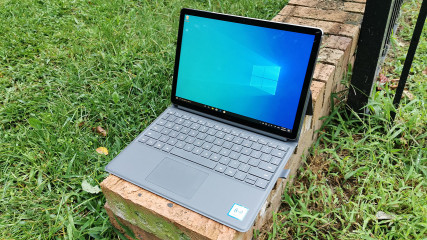
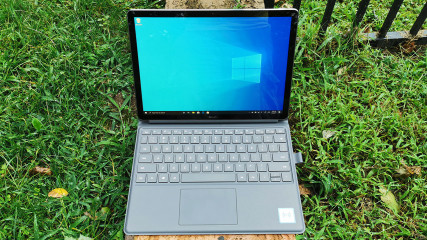
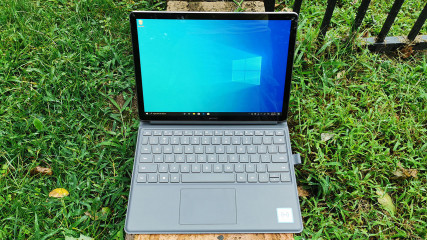
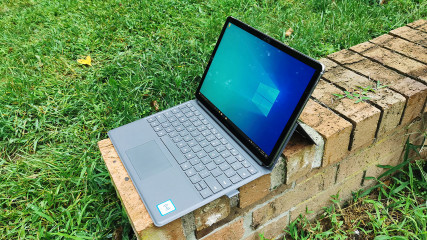


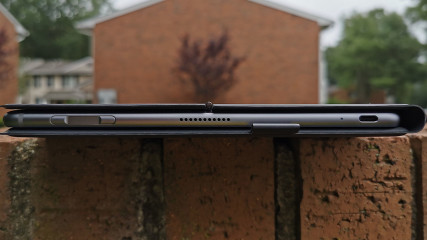
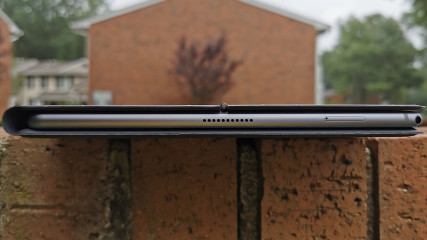
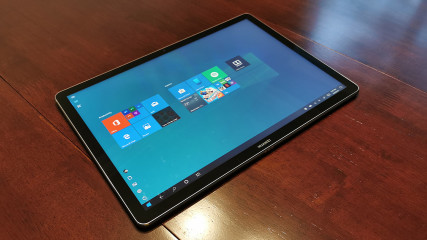

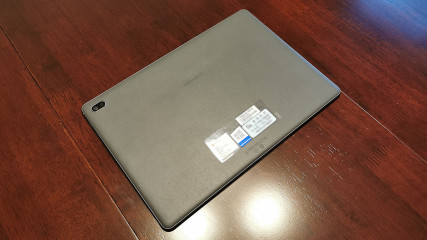
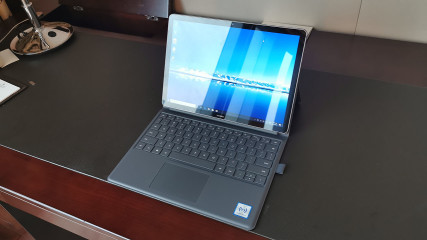
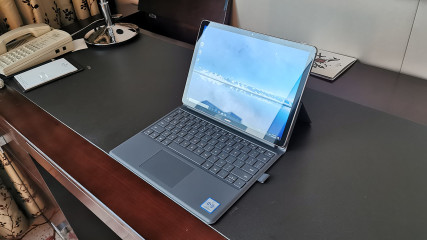

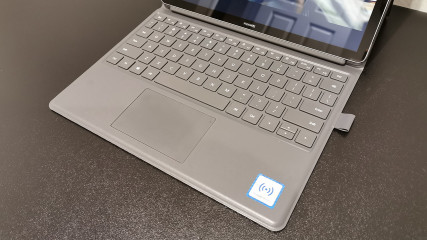









2 Comments - Add comment